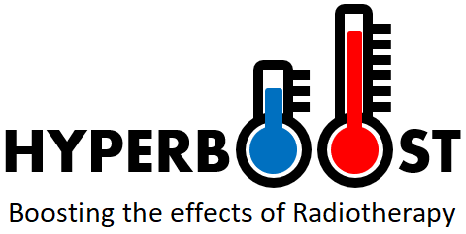WP4
Work Package 4 (WP4): combined radiotherapy and hyperthermia treatment planning model
Aim of WP4 is to translate preclinical results (WP3) and clinical results (WP5) into mathematical relations and treatment planning models reflecting the effective dose of hyperthermia combined with radiotherapy. Loco-regional hyperthermia treatments of deep-seated tumors are currently performed using arrays of multiple radiofrequent antennas placed around the patient. Hyperthermia treatment planning is presently used to accurately predict and prescribe antenna settings leading to absorbed power and temperature distributions achieving optimal tumor heating. The next step is to translate thermal dose into clinical effectiveness predictions reflecting the effective dose of hyperthermia combined with radiotherapy using the Biologically Equivalent Dose (BED) used in radiotherapy to predict cell survival, tumor control probability (TCP) and normal tissue complication probability (NTCP) as function of radiotherapy and hyperthermia treatment parameters.
Aim of WP4 is to extend existing biologically equivalent dose models by incorporating the action of all major hyperthermia effects into a novel radiotherapy + hyperthermia treatment planning platform. Four ESRs will work in WP4.
ESR5 will extend the first-generation BED models with more HT effects using data from WP3 and literature, a challenging task as each mechanism triggered by HT displays different time and temperature dependent behaviour in the clinical 40-44°C HT temperature range, and differs for tumor and normal tissue.
ESR6 will add a sophisticated multi-objective module capable of patient-specific optimisation for personalised treatment planning.
ESR7 will work on reconstructing reliable and robust 3D temperature distributions from noisy MR-thermometry data,
ESR8 on an interface suitable for fast clinical work flow, incorporating these advanced personalised treatment planning tools developed by the other ESRs.
